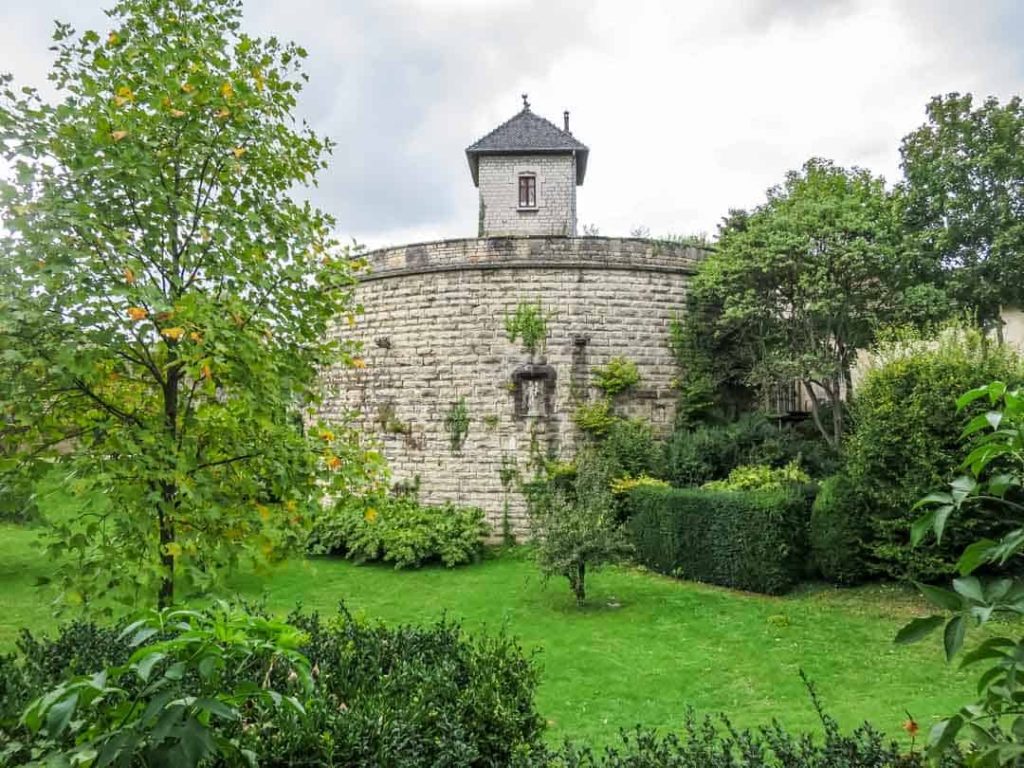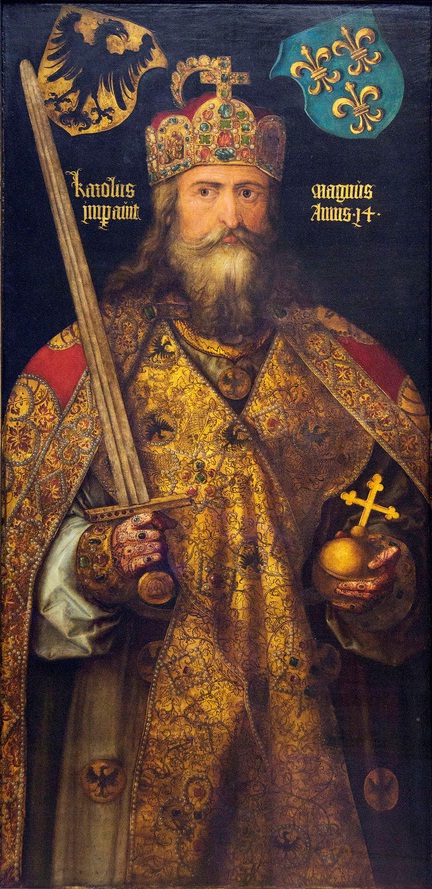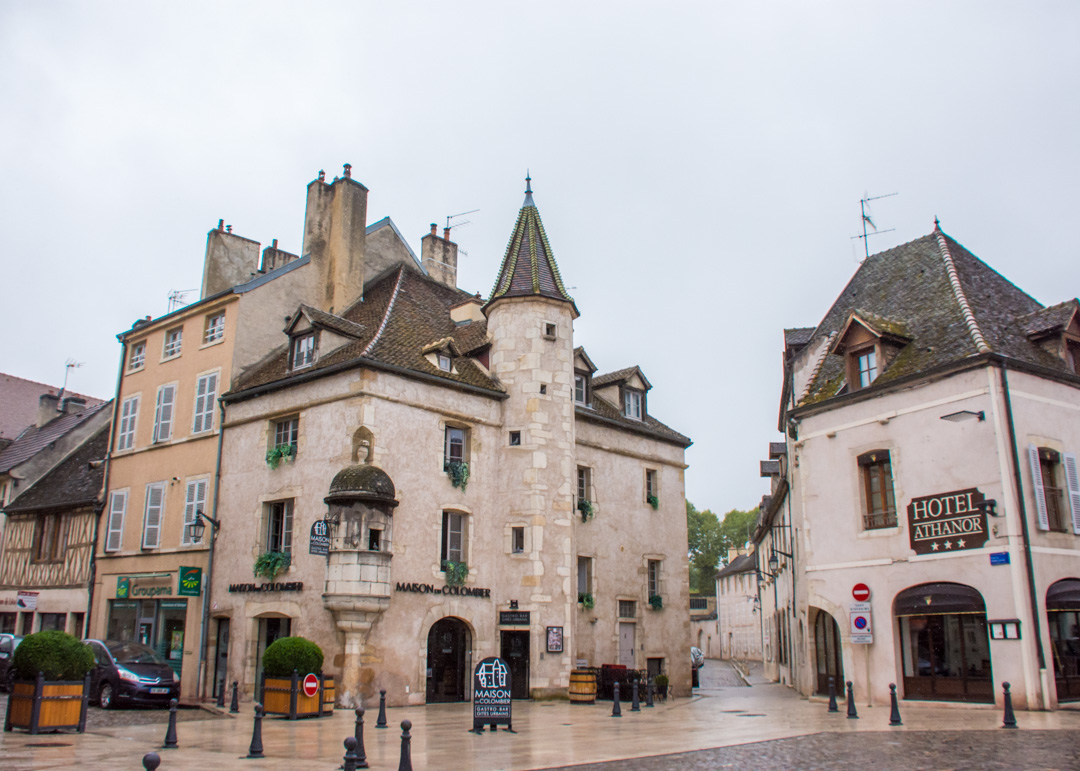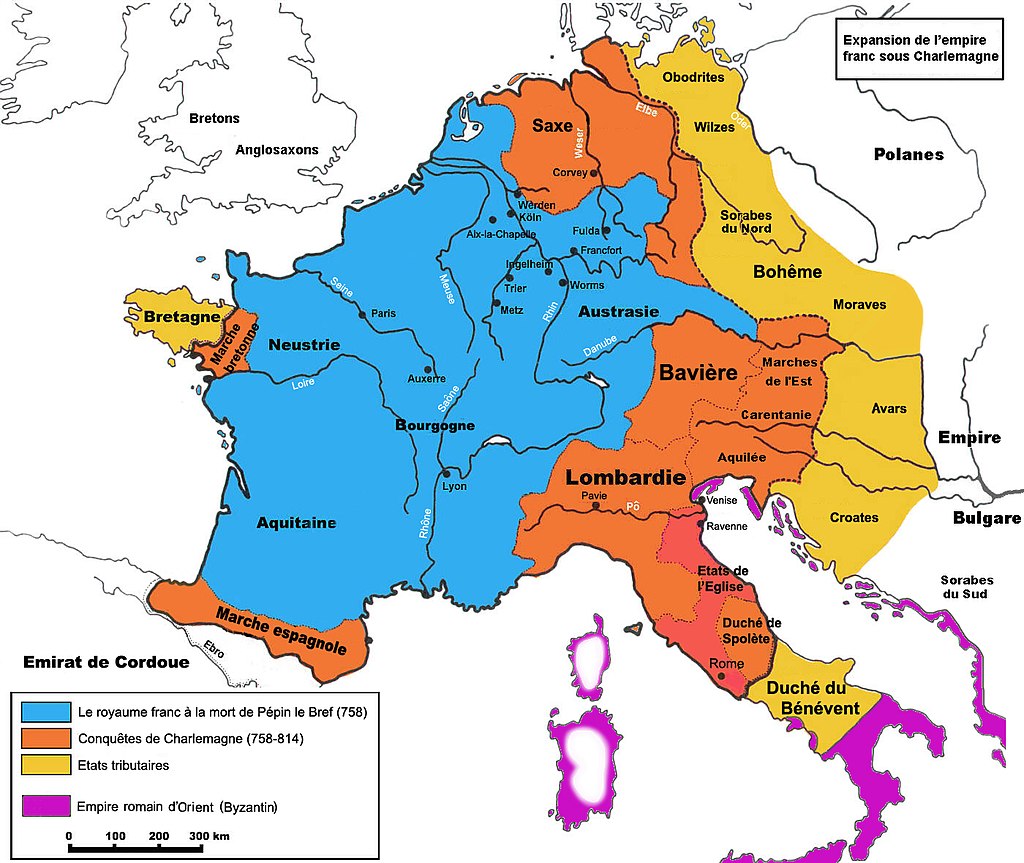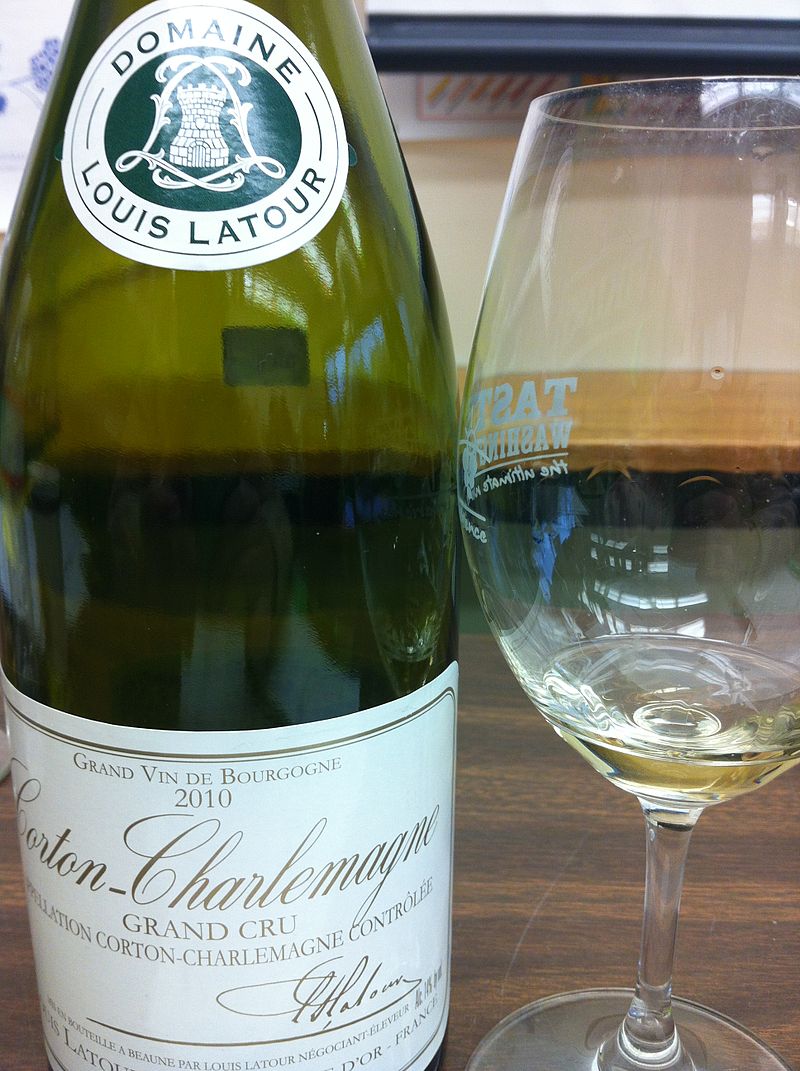
AsianOverland.net
Tour Guide - Itinerary
Asian Overland Sydney to London
Started 22/06/2022 Finished 21/06/2023365 Days ITINERARY
Day 266 date 14/03/2023PULIGNY-MONTRACHET to BEAUNE, BURGUNDY, FRANCE
ASIANOVERLAND.NET LONDON TO SYDNEY DAY 266: PULIGNY-MONTRACHET TO BEAUNE, BURGUNDY, FRANCE
Charlemagne (2 April 747 – 28 January 814) was King of the Franks from 768, King of the Lombards from 774, and the Emperor of the Romans from 800. Charlemagne succeeded in uniting the majority of western and central Europe and was the first recognized emperor to rule from western Europe after the fall of the Western Roman Empire around three centuries earlier. The expanded Frankish state that Charlemagne founded was the Carolingian Empire.
Charlemagne was the eldest son of Pepin the Short and Bertrada of Laon. He became king of the Franks in 768 following his father's death, and continued his father's policy towards protection of the papacy and became its sole defender, removing the Lombards from power in northern Italy and leading an incursion into Muslim Spain. He also campaigned against the Saxons to his east, Christianizing them (upon penalty of death). He reached the height of his power in 800 when he was crowned Emperor of the Romans by Pope Leo III on Christmas Day at Old St. Peter's Basilica in Rome.
Charlemagne has been called the "Father of Europe", as he united most of Western Europe for the first time since the Roman Empire, including parts of Europe that were never under Frankish or Roman rule. His reign spurred the Carolingian Renaissance, a period of energetic cultural and intellectual activity within the Western Church. The Eastern Orthodox Church viewed Charlemagne less favourably, due to the Pope's preference of him as emperor over the Byzantine Empire's first female monarch, Irene of Athens. These and other disputes led to the subsequent split of Rome and Constantinople in the Great Schism of 1054.
Corton-Charlemagne is named after the Holy Roman Emperor Charlemagne, who once owned the hill of Corton on which the vineyards now rest. Apparently, the Corton-Charlemagne vineyards are dedicated to white grapes (chardonnay), because the emperor's wife preferred white wines as they did not stain his beard.
During the Middle Ages, Burgundy was home to some of the most important Western churches and monasteries, including Cluny, Cîteaux, and Vézelay.
The Hospices de Beaune or Hôtel-Dieu de Beaune was founded on 4 August 1443, when Burgundy was ruled by Duke Philip the Good. The Hundred Years' War concluded with the signing of the Treaty of Arras in 1435. Massacres, however, continued with marauding bands still roaming the countryside, pillaging and destroying, provoking misery and famine. The majority of the people of Beaune were destitute, and the area suffered an outbreak of plague. Nicolas Rolin, the Duke's Chancellor, and his wife Guigone de Salins, responded by building a hospital and refuge in Beaune for the poor. Having gained permission from Pope Eugene IV in 1441, the hospice was consecrated on 31 December 1452.
The original hospital building, the Hôtel-Dieu, one of the finest examples of fifteenth-century Burgundian architecture, is currently a museum. An important charity wine auction has been held in November each year since 1859 in the great hall of the Hôtel-Dieu.
The Burgundian State, in its own right, was one of the largest ducal territories during the emergence of early Modern Europe and was one of the major powers of the 15th century and the early 16th century. The Dukes of Burgundy were among the wealthiest and most powerful princes in Europe, and called "Grand Dukes of the West".
Beaune is surrounded by some of the world's most famous wine villages, Corton, Pommard and Volnay, and cellars of many great producers are in the historic centre of Beaune itself, as they have been since Roman times. With a rich historical and architectural heritage, Beaune is the "Capital of Burgundy wines". It is an ancient and historic town on a plain by the hills of the Côte d'Or, with features from pre-Roman, Roman, medieval and renaissance periods.
Beaune is a beautiful walled city, with about half of the battlements, ramparts, and moat in good condition. The central "old town" or "vieille ville" is extensive. Historically, Beaune is intimately connected with the Dukes of Burgundy.
The 15th-century Hospices de Beaune, in the town centre, is one of the best preserved renaissance buildings in Europe. Other landmarks in Beaune include the old market (les Halles), the Beffroi (clock tower), and the collegiate church of Notre Dame. Beaune is one of my favourite European cities for many reasons, including the fact that it hosts the bi-annual Grands Jour de Bourgogne: https://www.grands-jours-bourgogne.fr/en/
© This work is copyright. Apart from any use permitted under the Copyright Act 1968, no part may be reproduced by any process, nor may any other exclusive right be exercised, without the permission of Peter Searle, peter@portseavillageresort.com; 1980-2024.
Website built by Justin O’Dea www.webdeveloperdocklands.com.au
